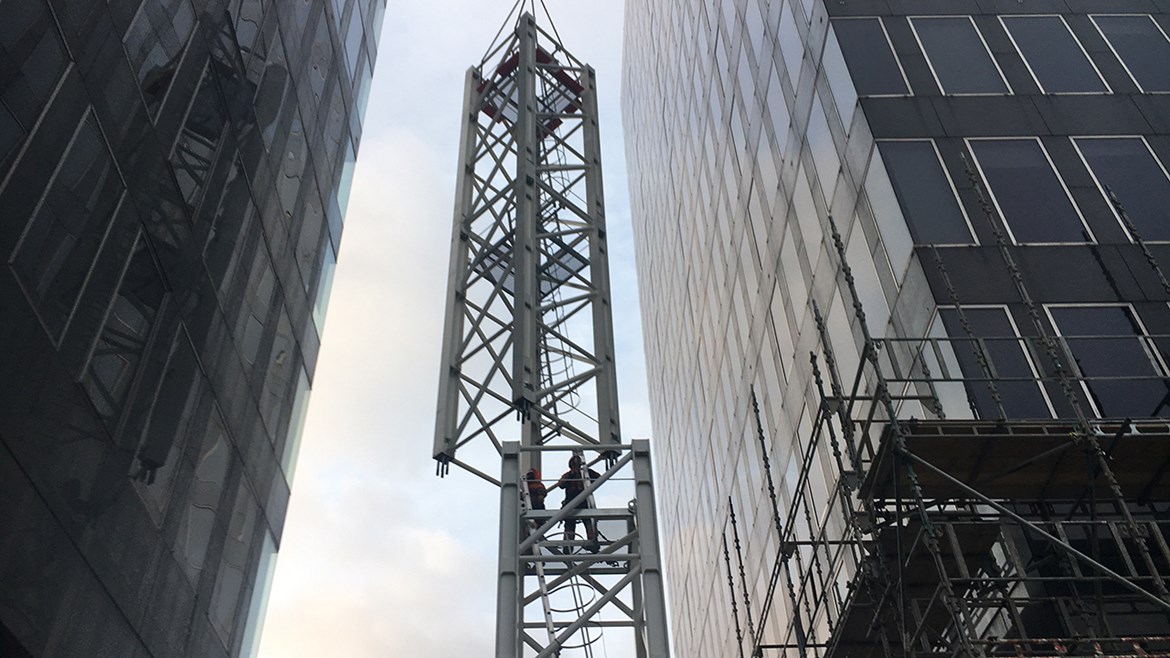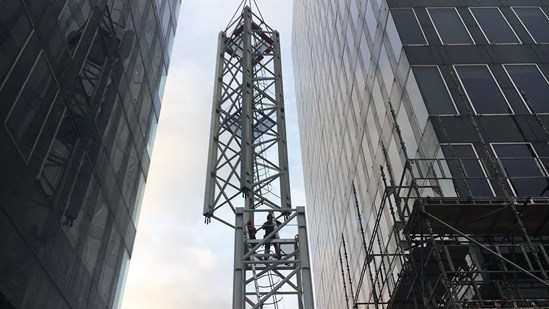The latest images from the HS2 site at Euston show contractors at work on top of the two 1970s towers at the front of Euston station - with 4 floors already removed from the two huge office blocks.
Grant Thornton House and One Euston Square – completed by prolific and divisive modernist architect Richard Seifert - are set to make way for eleven new high speed platforms, with more space for passengers and better links to the London Underground.
Completed in 1968, the current Euston station was designed for 20 million passengers a year. It now handles more than double that number of journeys, including the UK’s most overcrowded train – the 17:46 West Midlands Trains service to Crewe.
HS2 is designed to more than double capacity at Euston - one of the busiest stations in the UK - releasing space on the existing mainline for extra commuter services into the capital. As a result, commuters from places like Milton Keynes could see a 76% increase in the number of seats into Euston during peak hours.
Over the last seven months, HS2’s early works contractor, a Costain and Skanska joint venture (CSjv), working with demolition sub-contractor McGee have wrapped the towers in an acoustic wrap designed to limit dust and noise. They’ve also stripped out the interiors leaving just the shell of the buildings.
Euston Programme Director Rob Carr said:
“HS2 has the potential to transform Euston, more than doubling the number of seats out of the station during peak hours, freeing up more space for commuter services and improving links to the London Underground.
“The complex demolition of these two towers will be a turning point for Euston - the first major change to the skyline for almost fifty years.”
The second stage of the demolition has now begun, with the team carefully lifting excavators equipped with pneumatic breakers and hydraulic munchers to the top of the towers, where, 60m up in the air, they have begun gradually breaking up the structure of the building. Material from the building is then lowered by crane, or dropped down the former lift shafts in the centre of the building to limit disturbance caused by dust and noise.
The work has been made more complex by the discovery of a huge 2.8m thick heavily reinforced concrete pedestal supporting the weight of One Euston Square. This feature is missing from the otherwise almost identical smaller tower and wasn’t discovered until specialist teams began stripping out the interior of the building.
Over the next year, the two towers are set to be reduced to just over 28,000 tonnes of crushed concrete, with the material stored on site ready to be reused during the construction of HS2’s London terminus. In total, 98% of the structure is expected to recycled.
In fact, the towers are set to disappear at a rate of one floor every 9 days, with both buildings due to get down to 1st floor level by January 2020.
The two towers, at 40m and 60m respectively, were completed in 1971, just three years after the rest of the station, in a similar modernist style.

